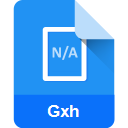.ASMDOT File Extension

SolidWorks Assembly Template
| Developer | Dassault Systemes |
| Popularity | |
| Category | CAD Files |
| Format | .ASMDOT |
| Cross Platform | Update Soon |
What is an ASMDOT file?
In the realm of CAD (Computer-Aided Design) software, SolidWorks stands tall as a pioneer in facilitating the creation of intricate 3D models and assemblies.
Among its myriad file extensions, the .ASMDOT format holds a significant place, serving as a template for SolidWorks assemblies.
In this comprehensive guide, we delve into the origins, structure, advantages, disadvantages, conversion methods, and accessibility of .ASMDOT files.
More Information.
The inception of .ASMDOT files can be traced back to the early iterations of SolidWorks, where engineers and designers sought a standardized approach to streamline the assembly design process.
These templates were envisaged as pre-configured frameworks, equipped with essential components, constraints, and design parameters tailored to specific project requirements.
By leveraging .ASMDOT files, users could expedite the creation of assemblies while ensuring adherence to design standards and best practices.
Origin Of This File.
The .ASMDOT file extension finds its roots in the evolution of SolidWorks, a flagship product of Dassault Systèmes.
Introduced as part of the software’s framework, .ASMDOT files emerged to streamline the creation of assembly designs. Initially conceived as a means to standardize the assembly process within SolidWorks, these templates have evolved to cater to the diverse needs of designers and engineers across industries.
File Structure Technical Specification.
.ASMDOT file is a structured document encoded in a proprietary format optimized for SolidWorks. The file encapsulates a hierarchy of assembly components, constraints, mates, configurations, and metadata pertinent to the design.
Structured in accordance with SolidWorks’ data model, .ASMDOT files adhere to a strict schema, facilitating seamless interoperability within the software ecosystem.
Technical specifications of .ASMDOT files encompass geometric data, assembly constraints, material properties, metadata, and configuration parameters.
Leveraging a combination of binary and XML-based encoding, .ASMDOT files encapsulate design intent while ensuring efficient data storage and retrieval within SolidWorks environments.
How to Convert the File?
Converting .ASMDOT files to alternative formats entails several approaches:
- Export to Standard Formats: SolidWorks provides built-in functionality to export assemblies to standard formats such as STEP, IGES, and STL, enabling interoperability with other CAD software.
- Third-Party Converters: External converters and interoperability plugins offer options to convert .ASMDOT files to formats compatible with a wide range of CAD software.
- Manual Reconstruction: In cases where direct conversion is impractical, manual reconstruction of assemblies using alternative software may be necessary, albeit time-consuming.
Advantages And Disadvantages.
Advantages:
- Standardization: .ASMDOT templates foster standardization across assembly designs, ensuring consistency and adherence to design guidelines.
- Efficiency: By providing pre-configured assembly frameworks, .ASMDOT files expedite the design process, enabling rapid prototyping and iteration.
- Customization: Users can tailor .ASMDOT templates to suit specific project requirements, incorporating design constraints, components, and parameters as needed.
Disadvantages:
- Dependency: Designs reliant on .ASMDOT templates may face compatibility issues if transferred to environments lacking SolidWorks support.
- Complexity: Elaborate assembly designs encapsulated in .ASMDOT files may exhibit performance degradation, especially on resource-constrained systems.
- Versioning: Compatibility challenges may arise when migrating .ASMDOT files between different versions of SolidWorks, necessitating careful version management.
How to Open ASMDOT?
Open In Windows
- SolidWorks, being a Windows-centric application, seamlessly opens .ASMDOT files on Windows-based systems. Users can simply double-click the file or launch SolidWorks and navigate to the File menu to open the assembly template.
Open In Linux
- Similar to MacOS, SolidWorks lacks native support for Linux environments. Users can explore compatibility layers like Wine or virtualization solutions to run SolidWorks on Linux distributions, albeit with varying degrees of functionality and performance.
Open In MAC
- While SolidWorks does not natively support MacOS, users can leverage virtualization software or dual-boot setups to run SolidWorks on Mac hardware, thereby enabling access to .ASMDOT files.













